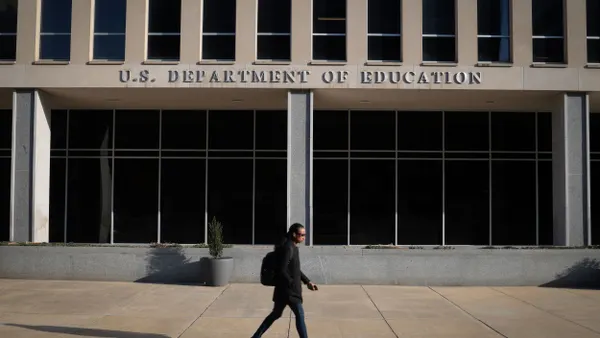Dive Brief:
- Eliza Chappell Elementary School in Chicago handles recess time by directing some of the activities students do during their break, writes EdSurge. The play is structured by the nonprofit Playworks, which also has a full-time coach at the pre-K to 8th grade school.
- Recess is about more than just giving students downtime, providing a way to weave in social skills, such as showing students how to handle conflict resolution, build resilience and be supportive of each other, school leaders say. The hope is these tools show children how to work together during class time as well.
- In addition, teachers consult with the coach to identify students who may benefit from having opportunities to be a leader, stretching themselves in ways that may not be happening in other areas of their education.
Dive Insight:
As important as academics are to a student’s education, so too are downtime and the opportunity, during the school day, for children to play. Recess is traditionally when students have a chance to direct their own activities, unstructured time that they control. While Eliza Chappell Elementary School is using somewhat of a structured approach, students still get to play games and enjoy activities such as tag.
Learning requires breaks — even short ones. Recess and other play-heavy periods not only offer students the opportunity during the school day to build social-emotional skills, but they also may help students pay better attention when in class, says one international expert.
Some educators reported in a 2017 study that after giving students a chance to move around for just five minutes before a test, they performed better on exams. This point was echoed in a 2018 study that found one elementary school that doubled the number of recess periods offered during the day saw math test scores increase.
Likewise, an elementary school in Forth Worth, Texas, increased recess breaks to four 15-minute periods a day. At first, educators had to adjust to having less time to teach in the classroom. But teachers reported that after five months of the increased breaks, students focused better during lessons than before the play time was inserted into the day.











